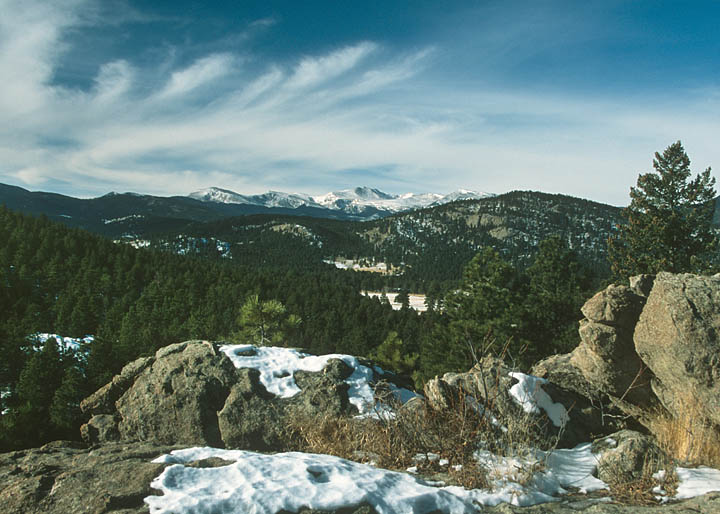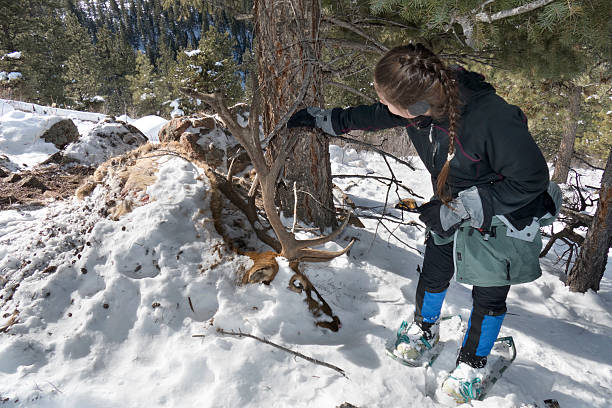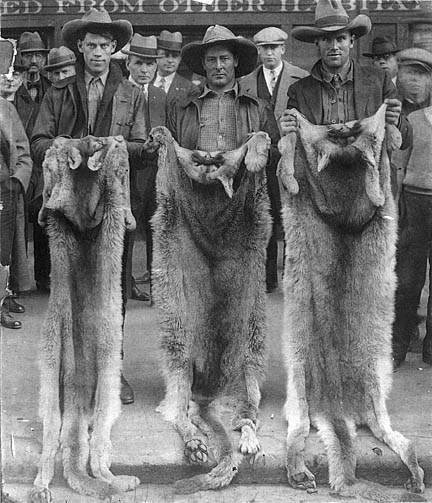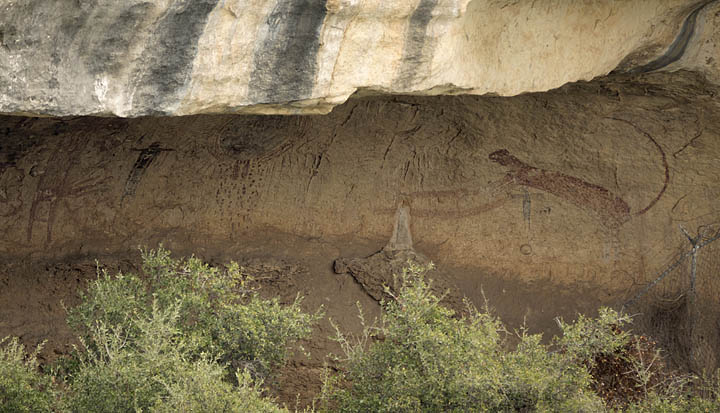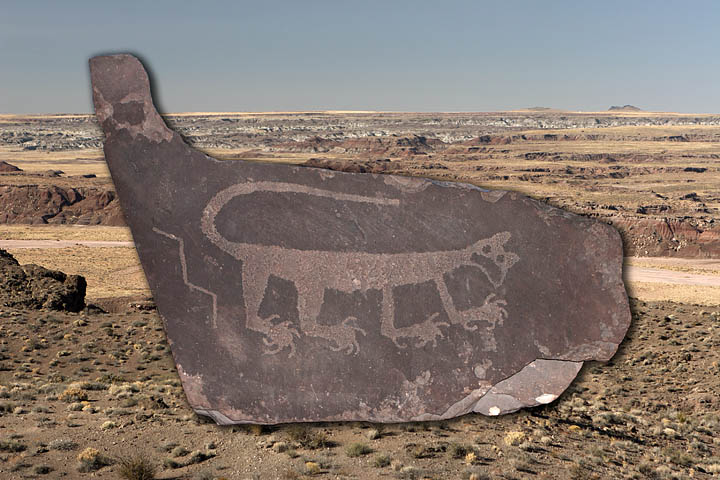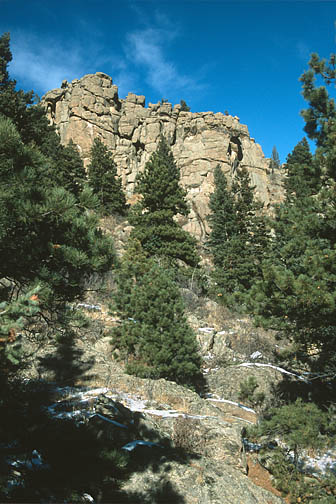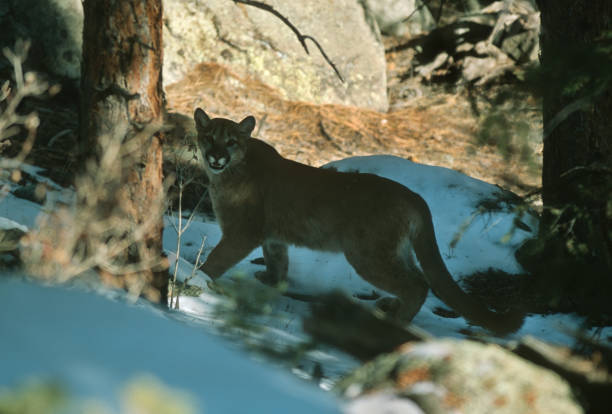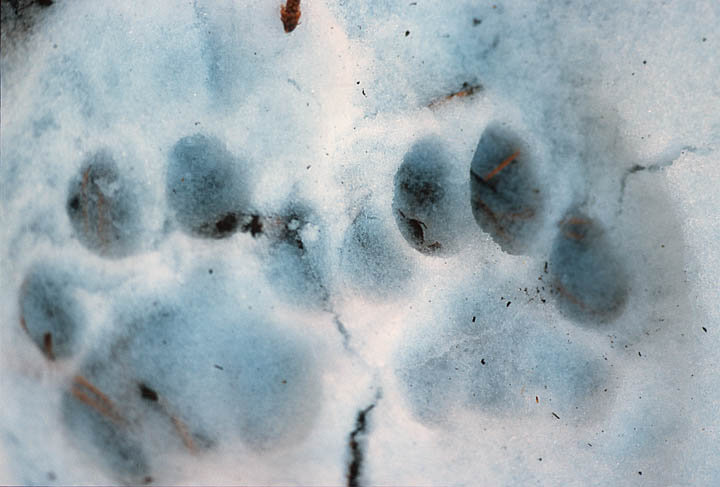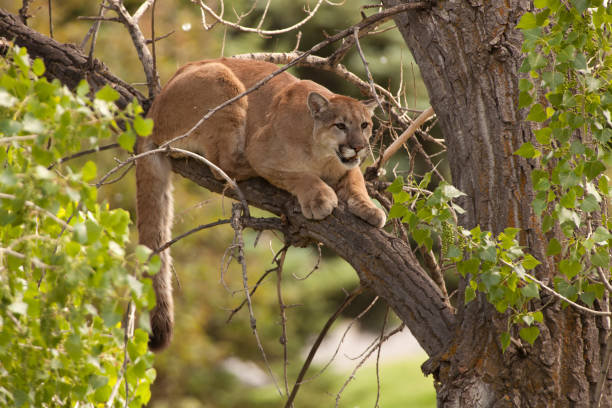 |
 |
 |
   |
Searching for the Wild May 23, 2022 Photos and text by Dave Parsons Traversing the slippery hillside, I scanned the uneven ground, looking for tracks in the snow among the deadfall and pine needles littering the forest floor. Hiking northward through a Ponderosa pine forest, I soon encountered the distinctive Precambrian aged, Silver Plume quartz monzonite rock outcrops which looked out over the tree tops. Alderfer/Three Sisters Park in Evergreen, Colorado is partially named after the row of gray to light pink volcanic rock pinnacles formed by the slow cooling of underground magma, sculpted and rounded by wind and water erosion over hundreds of millions of years. The intense sunlight at almost 8,000 feet was melting patches of windblown snow remaining on one of the stone promontories named "The Brother," nearly a half mile south of "The Three Sisters." Looking westwards, high, wispy, cirrus clouds streamed eastwards through a blue sky over the distant, snow covered 14,264 foot high Mount Evans. Tufts of dry, yellow grass nestled among niches in the rock vibrated in a light breeze. Small stands of elk gnawed aspen stood dispersed throughout the forest along with open parkland spaces covered in snow and dry grass. Perfect mountain lion habitat. Descending the grainy rocks, the chilly wind calmed as I continued in my northerly direction. The sunny and mild December day continued to melt much of the snow in the shaded areas, its consistency perfect for making snow balls and detailed footprints. Earlier in the month, the Colorado Division of Wildlife (DOW) reported three mountain lion kits had taken up residence "in close proximity to homes in the Evergreen area." According to residents in late November, the kits were "just running around the neighborhood" and some "saw three baby mountain lions go under a house." After a few house cats in the neighborhood "disappeared," and dogs had been "barking a lot" during the week, the DOW recommended residents "should keep pets indoors and refrain from feeding them outdoors." They also suggested to "keep a close eye on children" and exercise in other areas. Likewise, against typical common sense, I thought, what a perfect opportunity to find a mountain lion! So, against what the DOW would most likely recommend, I triangulated the possible locations of the lion family from various reports and bushwhacked through fallen trees and crunchy pine cones on a December day. As development has exploded along the Colorado Front Range, neighborhood homes have sprouted up throughout the mountain forests and foothills pouring out onto the arid plains with lush lawns, gardens and shady trees creating parkland paradises for wandering wildlife. Deer and elk populations have similarly grown as elusive mountain lions follow their favorite prey into these neighborhoods. For some unfortunate home owners living in the territory of a big cat, they wonder what has become of their missing and beloved pet they left outside during the night. Opportunistic lions, especially ones feeding young kits will take advantage of any easy prey as they patrol their natural hunting grounds filled with vulnerable human pets. In recent years, sightings have increased as residents photograph lions from their mountain home living rooms and security cameras video cat families wandering past in the night. Mountain lion numbers are actually growing and spreading eastwards across the U.S. in a rare predator success story among the current decline of worldwide wildlife. It was not long ago predators were hunted mercilessly and extirpated from much of Colorado. Wolves were eradicated from Colorado in the mid 1940’s and the last grizzly was killed in 1979 and unfortunately, coyotes are still killed regularly. In 1924, Denver’s local newspaper paid "$25.00 bonuses which the Denver Post awards to anyone killing a mountain lion in Colorado."
"The cats, thanks to their fierce territoriality, limit their own numbers naturally. By staking, marking and defending clearly defined home ranges mountains lions vary rarely exceed more than two to four adult resident cats per hundred square kilometers (forty square miles). The hunting and killing of mountain lions does, however, disrupt the felid social order - which in turn may lead to more human-cat conflicts in the long run." Despite continued persecution, stealthy mountain lions, for the most part stay out of the public eye and are seldom seen. It was a brief night time sighting in the spring in 1997 at Mesa Verde when I encountered my first lion that has spurred my interest. While on a tent camping trip with my wife, the big, brown cat sprinted across the road with his outstretched legs and tail through the truck headlights. Pulling to the side of the road, I came to a stop. About 20 yards away, he also stopped at the edge of the pavement to look back. Keeping my eyes on the cat, I fumbled in the dark for an old point and shoot film camera and took a picture through the windshield, but it just reflected back filling the cab with light. Rolling down the window, I took another quick picture as he walked away up the hillside with his long tail trailing behind. Thrilled by the encounter, I wanted to see more of the elusive cats in person, not with a camera trap or remote camera or from the seat of a vehicle. It was most likely a fools errand and a virtually impossible task considering they mainly hunt at night - not to mention, potentially dangerous I thought to myself as I hiked through the forest on that Sunday afternoon in December, 2003. Just a few months earlier on July 23, 2003 a resident from Louisville was riding his mountain bike through another Front Range park, White Ranch Park, northwest of Golden when he interrupted a mountain lion pursuing a deer. Loosing the deer and still in hunting mode, the lion turned his attention to the biker. Now face to face, the lion began to stalk him. Lifting his bike into the air to look larger and more menacing, the lion still approached. Eventually, after throwing his water bottle and a string of expletives at the cat, he eventually turned tail. The July report quoted a DOW representative stating: "This fellow did everything you’re supposed to do." He continued, "It’s extremely rare for a person to see a mountain lion. We have wildlife officers who go an entire career without seeing a mountain lion." I continued my search. According to The Rocky Mountain News on November 29, 2003, residents reported seeing young mountain lions "hanging out on this outcropping across the street." Later reports mentioned the DOW relocating the young cats away from the homes and moving them into Three Sisters Park, so I figured the cats liked the cover of the rocks and bushwhacked northwards from the park’s East trailhead.
Paralleling the escarpment, I scrambled to the top of The Brother and enjoyed the view of Mount Evans and Evergreen Mountain to the south. Working my way back down off the overlook, I was in the thick trees, deadfall and scattered boulders the size of VW bugs. Moving quietly, I avoided stepping on the numerous twigs and pine cones. There was no breeze in the ponderosa woods as I dodged the branches of grabby shrubs and patrolled the undulating landscape through beds of pine needles and shaded snow. Bird and Abert squirrel tracks dotted the snowy ground. Crows called out in the distance. Slowly, climbing through a shallow ravine, I stopped at the sight of movement and so did the cat. Looking intently at each other, most of my body was obscured by snow and rocks. She stood in the shade between two big ponderosa pine trees with her feet firmly planted about thirty yards away from me. She didn’t move, but just looked at me, assessing the situation. Still surprised at such a surreal meeting and with adrenaline rushing, I slowly raised my camera hanging over my right shoulder and looked through the 300mm lens at her piercing black, outlined eyes and took a few photos as she hissed. Lowering the camera, I just stood there and watched. She still had the remnants of spots on her hind quarters from her youth, but beyond that she was close to being a full size cat. Magnificent. For a brief moment longer we watched each other, until she turned her head away and walked into the brush, carefully padding off to the north. After waiting a minute, I climbed over logs and boulders and found her fresh tracks where she had stood just a moment ago. Toes and pads were pressed into the melted snow with little bits of dirt and plant material. Pressure cracks had also formed in the snowy tracks as she pushed off to go on her way. Following her footprints another few hundred yards, I found she had backtracked over her same path which led to our rare visit.
Satisfied with our 1 in a million encounter, I hiked through the forest and acquired the "Sisters Trail" and made my way back to the parking lot. Unknown to everyone, as people were riding their bicycles, hiking and running on all the nearby trails, a young mountain lion was quietly stalking through the nearby woods. For a moment, I felt like I had to tell everybody passing by there’s a mountain lion close by. But the truth is, in the Front Range, there’s always a lion close by and they will see you, but you won’t see them. I felt the forest had let me in on a little secret, a brief moment of wonder.
Every few years after the Three Sisters meeting, I would have more encounters with mountain lions, all along Colorado’s Front Range except for my first meeting in Mesa Verde. While hiking, gnawed deer and elk carcasses or footprints in the snow and mud or scat scraped into dirt and pine needle piles would provide an alert and telltale evidence, warning that there were always lions nearby. Attacks on humans are even more rare than lion sightings, but do occur. As boundaries between humans and wildlife grow more blurred, conflict is inevitable, especially as habitat loss and human pressures grow. The Colorado Parks and Wildlife recommends traveling in groups and making plenty of noise when traveling through lion territory, but I would also suggest to take a moment and travel quietly, decipher the bird song and listen to the wind through the trees. Put the phone down and be aware of your surroundings and think how a mountain lion would think and perhaps find the magic in every wild encounter big or small, plant or animal.
|
||||||
Destinations in the Gallery
All contents copyright ©Dave Parsons
DP Home | Feature | Gallery | About
